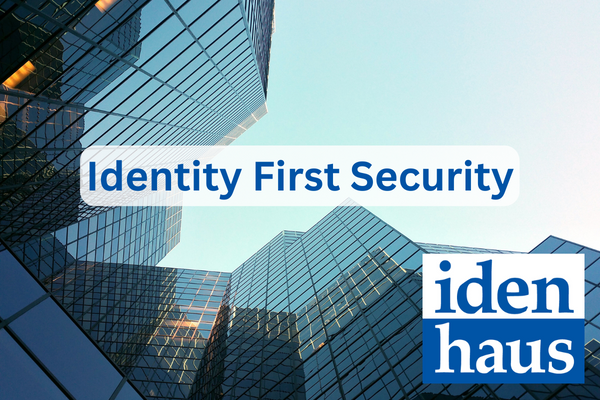Idenhaus attended last Monday’s Gartner session titled, “Identity-First Security as the North Star for Your IAM Reimplementation” led by Mary Ruddy. She focused on a key area that’s gaining attention: Identity-First Security. As the ecosystem evolves once again, Enterprises large and small are making the necessary shifts. The best part? Identity tools can be used to do much more than improve an organization’s security posture. Below are three major take-a-ways from her talk:
Reduce Unnecessary Silos
In a Zero Trust world, it’s essential to have all your systems working towards a common goal. This can be accomplished by detecting and sharing signals with one another. For example, on the one hand we have Group A that might not “care” about collecting a piece of information for their specific job task, yet this piece of information is very easy to collect during said task. On the other hand, we have Group B that needs said piece of information to complete their job task, yet doesn’t have easy access to said information. The great news is, Group A and Group B sit next to each other, so Group A collects that information and hands it over to Group B. An identity-first approach becomes a broad program that weaves a variety of tools and processes into your overall “security fabric” that must contain three “pillars”: Consistency, Contextual Awareness, and Continuous Processes.
It’s essential your identity tools are consistently talking to one another, and providing context-aware attribution, like device, location, access requests, etc. to make better risk-based decisions. The goal is to use as much information as possible to form a comprehensive view of the identity, rather than a one-and-done log-in approach. Verification is continuous, running as quickly as possible in the background, and authentication happens more frequently to verify sessions still have necessary authority.
Don’t Try to Boil the Ocean
To implement an identity-first approach successfully, everyone has to be on the same page and focused on one area at a time, before expanding to others. It’s a multi-year approach involving many stakeholders that have to be moving in the same direction. This means your IT team will need to focus on hygiene, posture, PAM, IGA, SSO, and MFA. Cloud infrastructure entitlement features will need to be checked on a frequent basis, and your policies need continuous monitoring. Lastly, you’re also going to have to get buy-in from legal, compliance, HR, and App owners. **Tip** The relationships you have with stakeholders will be crucial to your success.
Take a Use Case Approach
Start with your users to understand what data flows and processes should be in place. The easiest starting point is understanding all of your workforce types (i.e. core employees vs. contractors vs. contingent workers). Then, prioritize your security goals to take a use case approach. This will enable you to identify the best tools and building blocks for your organization. And just like before, walk, don’t run. Spend time in the tools. Make sure you understand your threat environment, as well as your data flows. Take a macro level view, that focuses on each type of user and how their data flows can most efficiently run through your processes as quickly and autonomously as possible.
In Conclusion
Identity-first Security is a powerful approach to securing an organization as it drives efficiency. It can be used to improve your overall security posture by focusing on identity-based access control with the right tools and building blocks. You’ll reduce unnecessary silos, detect and share signals across the organization, and everyone will be moving in the same direction. Perhaps a snowball effect is in order. Don’t forget, you can always talk to the cybersecurity experts at Idenhaus to see what efficiencies we can drive for your organization.







